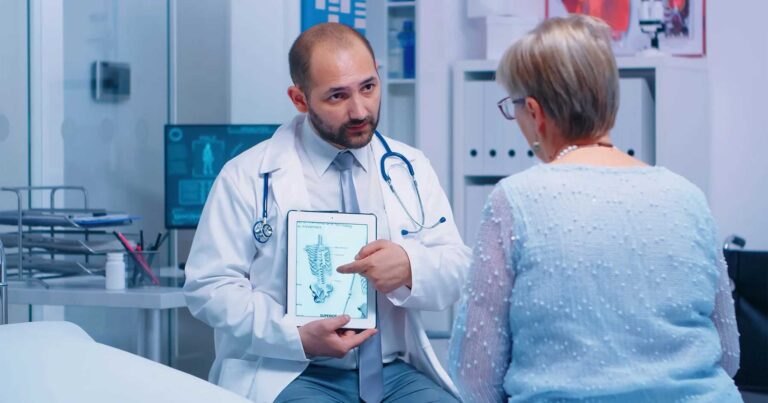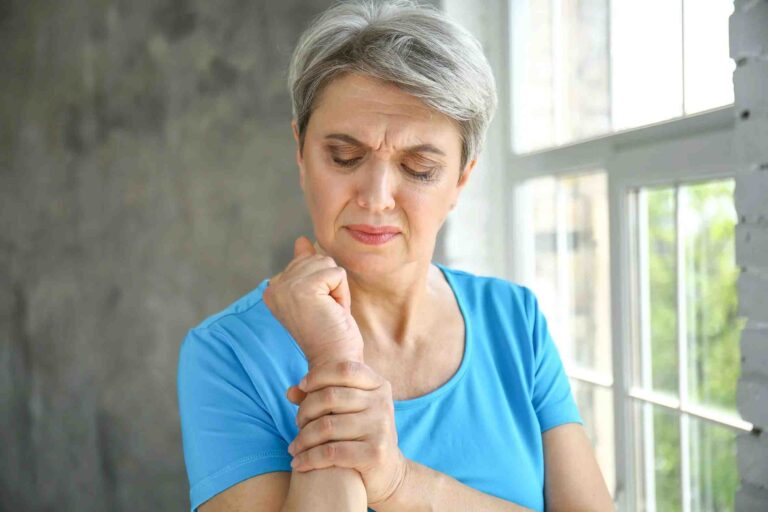When you hear “osteoporosis,” you might consider an old woman, feeble and slouching over a walker. Be that as it may, osteoporosis doesn’t just happen to more established ladies. Osteoporosis happens in ladies and men from all foundations. It might happen when individuals are more youthful assuming they have specific risk factors. We ought to be in every way concerned about osteoporosis and mindful of the things we can do to forestall it throughout our lives. All things considered, what we do today affects our bones today and tomorrow.
Osteoporosis signifies “porous bones.” The sickness happens when the body makes nearly nothing or loses a lot of bone. A few bone cells store osteoid (called bone formation), and other bone cells begin to dissolve bone (called bone resorption). This process of making and losing bone cells is called bone redesigning and is a normal process intended to remove and replace bone damaged with everyday exercises.

ARE SOME WOMEN MORE AT RISK FOR OSTEOPOROSIS?
Menopause is one risk factor for osteoporosis that affects all women. The chemical estrogen helps keep bones healthy and strong by assisting with controlling the cells that remove the bone. When estrogen levels drop because of normal or surgical menopause or connected with medications or some health conditions, women lose bone density faster than they did previously. As a matter of fact, in the five to 10 years following menopause, women can lose dependent upon 33% of their bone density. This age-related bone density decline happens to men, as well, likewise primarily connected with loss of sex hormones. There are several risk factors for osteoporosis among which some are within your control and some not.
- Cigarette smoking.
- Age over 65.
- Weight under 127 pounds.
- Personal history of fracture as an adult.
- Family history of osteoporosis.
- Caucasian or Asian ethnic backgrounds, but African Americans and Hispanic Americans are also at risk.
- Early menopause (before age 45) – spontaneous or due to surgical removal of ovaries.
- Estrogen loss caused by menopause, certain medical conditions such as athlete energy imbalance or anorexia nervosa, and treatment with medications that lower estrogen levels (such as to treat breast cancer).
- Chronic health conditions.
- Medications such as oral steroids, chemotherapy, seizure medicine, heparin, lithium, and thyroid replacement therapy.
- Going one year without a period in the pre-menopausal years.
- Excess alcohol consumption.
- Low calcium or vitamin D intake.
- Sedentary lifestyle.
- Osteoporosis treatment for female
WAYS THAT CAN HELP WOMEN IMPROVE BONE HEALTH
For women, your risk of developing osteoporosis is higher around the time of menopause. During menopause, your body goes through many changes – recalling a drop in your estrogen levels.
Additionally, the role of estrogen is vital in reproduction and the development of sexual characteristics, it also assists with keeping your bones. When these levels drop, your bones can become more brittle and make you more at risk for fractures.
Hormone and hormone-related therapy :- This incorporates estrogen, testosterone, and the specific estrogen receptor modulator raloxifene (Evista). As a result of the potential for blood clots, certain tumors, and heart disease, estrogen treatment is probably going to be utilized in women who need to treat menopause side effects and in more youthful women. Testosterone may be endorsed to increase your bone density on the off chance that you are a man with low levels of this hormone. Raloxifene behaves like estrogen in the bones. Calcitonin-salmon is a synthetic hormone. It reduces the opportunity of spine fractures, but not hip fractures or different sorts of breaks.
Get your bones moving :- Regular exercise fortifies your muscles and your bones. Research shows kids and youthful adults who exercise accomplish a more prominent pinnacle bone mass than adults who are not active. Proceeding to exercise when you are more seasoned will assist with keeping up with your bone mass. The two most significant sorts of exercise for bone health are muscle-strengthening and weight-bearing exercises. Lower-impact weight-bearing exercises, like strolling on a treadmill or utilizing an elliptical machine, also help. Swimming or water exercises and riding a bicycle keep up with muscle strength and heart and lung conditioning, however, they don’t impact bone strength as much as weight-bearing exercises.
Quit bad habits :- Certain lifestyle habits can influence your bone health. Smoking and often consuming liquor can both reduce your bone density. Removing these habits of your life isn’t just great for your bones but on the other hand, is great for your overall health and well-being.
Get more nutrients :- Calcium and vitamin D are fundamental for building strong bones. Vitamin D assists your body with absorbing calcium and strengthens your muscles so you can stay away from falls. Calcium gives solidarity to the bone. Your body’s stock of calcium, required in every aspect of the body, is primarily put away in bone.
DO PREGNANCY AND BREASTFEEDING AFFECT BONE DENSITY?
Your unborn child needs calcium to assist their bones with developing. While in the belly, babies get calcium from what they eat (or the supplements they take). If you don’t get sufficient calcium from food or supplements, your child will involve the calcium in your bones.
You can lose some bone density during pregnancy, however, any bone mass lost is generally restored after childbirth (or after breastfeeding). Also, during pregnancy, you absorb calcium from food and supplements (like pre-birth nutrients) better than women who are not pregnant. Your body also makes a greater amount of the hormone estrogen, which safeguards bone. Women frequently lose some bone density during breastfeeding. Yet, this loss is brief. A few investigations have shown that when women lose bone mass during breastfeeding, they recover full bone density in a half year after breastfeeding stops.

OUTLOOK
As you become older, your bones don’t make new bone quickly enough to stay aware of the bone loss. Furthermore, after menopause, bone loss happens much more rapidly. Osteoporosis that isn’t dealt with can prompt serious bone breaks (fractures), particularly in the hip and spine. One of every three women is probably going to have a crack brought about by osteoporosis in the course of her life. A few women foster an impermanent sort of osteoporosis during pregnancy.
Our experts at Specialty Care Clinics will take care of your health and help you recover from Osteoporosis. Speciality Care Clinics has cutting-edge medical care to diagnose any serious and chronic medical problems. Call us at (469) 545-9983 to book an appointment with our specialists
